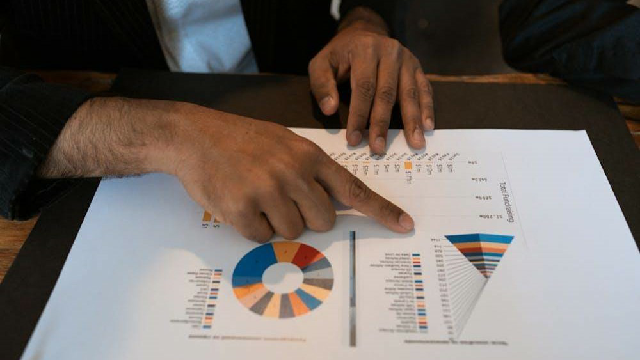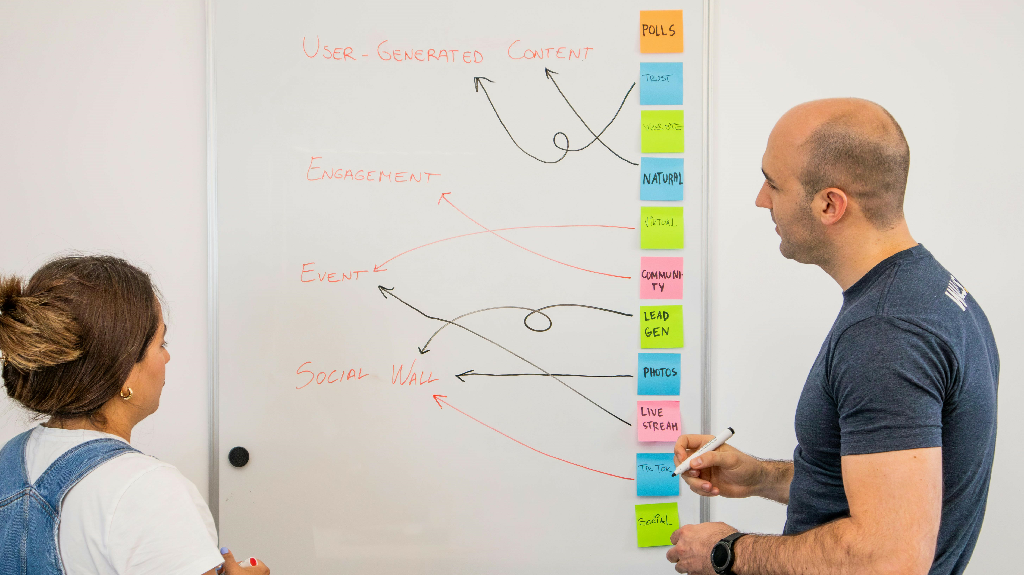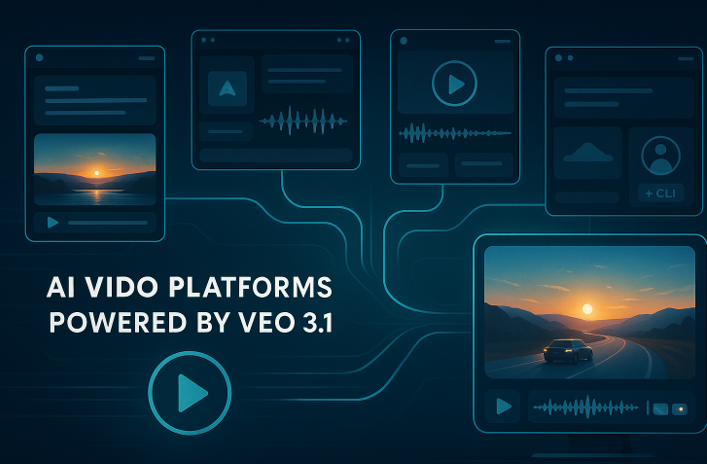AI and automation are already reshaping all of the lead generation processes. This trend is only going to grow as the tools become more powerful and accurate. With this in mind, it is not surprising that many marketers are wondering how to leverage this in the best possible way.
From personalized emails to fully autonomous AI-powered systems, the only true limit here is the creativity that one will use to put all this to use.
Before we dive too deep into the topic, let’s take a moment to understand why this is happening in the first place.
How is AI Helping Lead Generation?

Source: Photo by Pavel Danilyuk on Pexels
Lead generation is the process of identifying and attracting a potential customer. The role of AI here is to streamline the tedious and slow processes. In other words, chances are you can now streamline whatever you had to do repeatedly and manually a year or two ago with AI.
Besides the production, automatizing lead generation-related tasks can be visible in the other processes as well. Let’s take the following cold contacts as an example.
Instead of manually writing a series of outreach emails, now you can optimize the process by having AI do the heavy lifting for you. What is shown to give the best result is creating sequences that include short and sweet, manually written portions but also incorporate the personalized segments mentioned earlier.
Automating Planning for Operations
When it comes to lead generation, operational planning is often overlooked, yet it's crucial for sustaining a well-functioning system. Just think about it.
If you don’t have a clear “who does what structure” and you work in a team, your lead generation workflow can quickly become a complete mess. On the other hand, if you’re working on your own, it’s even more important to hold all of the strings tight.
Modern tools are capable of scheduling and monitoring deadlines and timelines. Most importantly, adjusting to the needs that emerge in the meantime. This can include sending campaigns at the times when your contacts are most likely to reply but also setting other metrics related to calendar planning.
Your work will likely depend on the tasks you have to do repeatedly. Getting things done daily won’t get you too far if you don’t have a greater picture, which will allow for continuous weekly planning, for example. Learning how to use a weekly planner can streamline this process, helping you stay on top of your goals while maintaining flexibility The same goes for monthly, quarterly, and yearly plans and milestones you might set for yourself and your team.
Unifying all of this information in a single place can help greatly. Instead of being scattered around several platforms, a good idea is to find one working solution and stick to it. AI or not, consistency of the processes you use in lead generation (and other activities) is the key.
Ads Optimization
Source: Image by Mohamed Hassan from Pixabay
Setting up campaigns in Meta Business Manager or Google AdWords looked much different a few years ago. Remember, not every AI is visible to the end user. With this in mind, it’s important to understand that the Big Five use AI much longer than any of us even know about it.
They utilize the vast amount of data they gathered over the decades and combine it with powerful AI models to specifically target ads to the audience that is most likely to engage with them.
On a side note, there are a lot of talks about data gathering and privacy-related issues. Many users report that they see personally relevant ads and are often confused about how their favorite social media platform would’ve known about them.
The answer here lies in the fact that AI models they’re polishing over the years have become so good at predicting what your next need will be even before you know it.
Example: Let’s imagine there’s a user called Mark. Mark has been browsing for outdoor gear and reading articles about hiking over the past few weeks. He hasn’t explicitly searched for hiking boots yet, but his recent online behavior signals an interest in outdoor activities.
The AI models in Meta Business Manager or Google AdWords have already taken note of this and cross-referenced it with other data points - like his location, purchasing habits, and even the time of year. As a result, he starts seeing ads for hiking boots, outdoor jackets, and nearby trails, even before he consciously decides to start shopping for them.
From the lead generation standpoint, this can be a major card to play when sourcing the leads for your next campaign. Instead of figuring out the perfect persona for your customer, you can offload that task to the AI models advertising companies use.
If you still need some support with the process, hiring external support might be a good idea. However, this comes with its own set of challenges. You’ll want to set a common agreement on what needs to be done and how. Also, you’ll have to provide just the right amount of access when it comes to your Meta business accounts or whatever other platform you’re using.
The verdict on this one is simple. The AI and supporting systems are already in place. You just have to find a proper way to utilize them and see your list of leads grow.
AI Influencers
Since generative AI slowly started taking the main stage on social media, many creators opened a brand new line in the social media industry: fully AI-generated influencers.
The concept itself isn’t new by any means. Some of the earliest virtual influencers date back to the 80s! The real difference here is the quality and accessibility. Anybody with a standard subscription to an AI image generator can produce images of an imaginary celebrity.
Depending on the niche in which you’re generating leads, you might just hit the home run! Since the reality in which anyone can generate AI influencers with accessible tools is still fairly new, you might be able to establish the first one in your micro niche!
On the other hand, even if your niche is already flooded with such profiles, you might want to create partnerships with people behind them. Just be sure that everyone involved (including the influencer audience) is aware that the ‘person’ they’re following is AI-generated.
Humans or AI, you’ll want to keep a close eye on what the influencers your brand is collaborating with are up to. One way to do this is to gather the links in a sheet and manually check on them daily.
However, since we’re talking about automating the tedious processes there must be a way to optimize this. The solution lies in the influencer tracking automation tools that monitor the activity of the selected influencers.
This is especially useful if the leads you’re generating are influencers. By opting for the more automatized option, you can spend more time developing new strategies and approaches instead of filling boringly long reports while chasing that one influencer to send you proof they published the content they already promised several weeks ago.
Lead Conversion
Although converting existing leads into customers falls out of the lead generation scope, it’s still an important segment to consider. The more leads you convert, the fewer new leads you have to generate, right?
That’s why I also want to pay some attention to the fact that AI and automation can be very useful in the post-generation phase of your lead funnel. Of course, this will work under the assumption that you already optimized your website for lead conversion and ticked off the other basic steps from the to-do list.
Let’s say you have a lead who is ultra close to becoming a client for your software product but isn’t sure if his team is going to like it or not.
A fair thing to do here is to offer some kind of demonstration of how it works in the real world. The only thing to decide now is the format of that demonstration. If you go with a standard “Here are the credentials, good luck” approach, the chances are that the client (or his team) won’t navigate it properly.
On the other hand, recording a video on how you use it, still isn’t perfect, as it misses interactivity.
That’s why my suggestion here is to go with a powerful yet c. This way, you get the best of both worlds. Interactive interface with plenty of tips for the user not to feel lost or abandoned while they’re considering becoming your client.
Another angle here is again related to communication. Just like you can utilize AI and automation tools for generating leads, you can have a similar approach to maintaining them. Have the AI come up with a draft of the report for the previous billing period.
You can even set it up to follow up on clients that you lost over the past period. This way you generate leads that already know your company, services, and products, so the chances of converting them back to customers are astronomically higher.
Predictive Analytics
Source: Photo by RDNE Stock project on Pexels
What if you had an AI model capable of telling you what is the value of your lead? And no, this isn’t a guessing game you can play with ChatGPT or any other LLM. Predictive analytics is an advanced form of data analytics actively used by top tech companies, mostly to achieve accurate ad targeting.
However, you can mimic this approach to develop lead value quantifiers while generating them. This will be especially useful if your part of the job is only to generate leads and not convert them later. This is also perfect for freelancers struggling to put a price tag on the leads they generate.
On the other hand, if you’re managing a team that actively brings leads, having an additional metric on how well their results perform is always welcomed.
Now we reached the point in which it can’t go more futuristic, so I’ll start wrapping it up before it’s too late. The best way to do it is to speculate more about what the future will bring!
What is The Future of Lead Generation?
The verdict here is a simple one! Lead generation processes will lean more toward utilizing advanced tools that allow for planning, monitoring, and execution of all of the related activities.
If you’re currently doing most of your work manually and are surrounded by competition that uses the potential of AI and automation, you’ll have to reconsider your workflows. Simply put, if you don’t adjust to these trends, it will quickly become impossible to stay in the game, as the competitors will be able to do more in a shorter time frame.
Conclusion
By 2024, automation and artificial intelligence will have transformed lead generation, resulting in more scalable and effective operations. Through advanced planning and tailored outreach, these tools let firms accomplish more in less time.
By utilizing AI-driven solutions, marketers may enhance lead targeting, streamline processes, and maintain competitiveness in a rapidly changing industry. It's imperative for success to keep up with the latest developments in AI and automation; it's no longer a choice.







